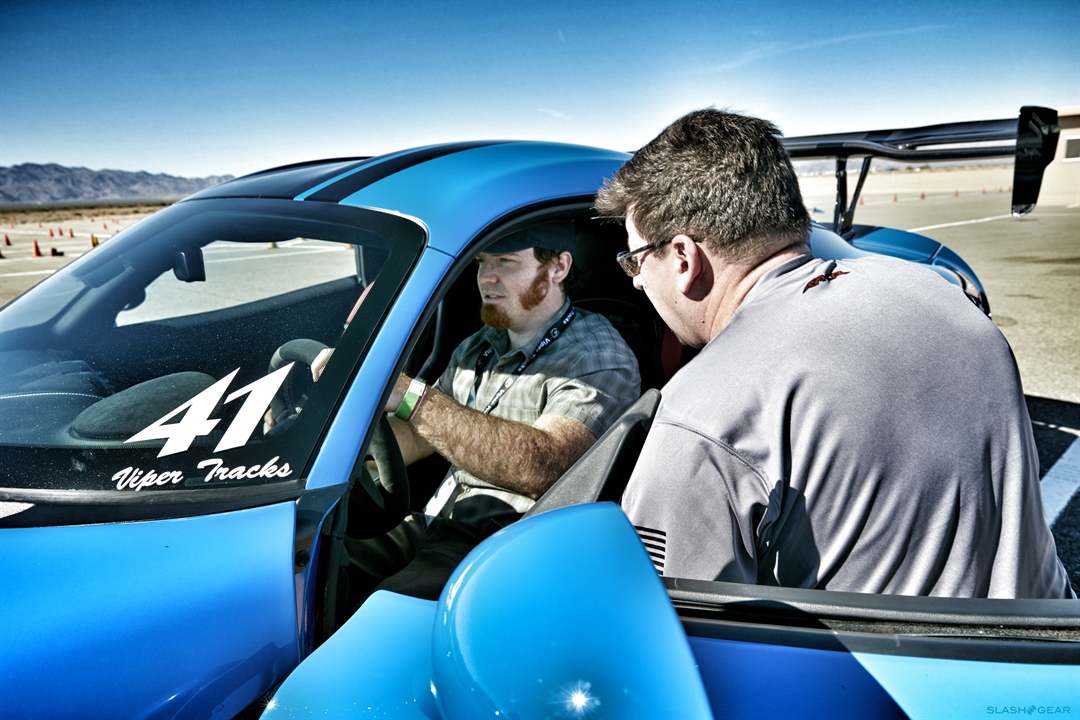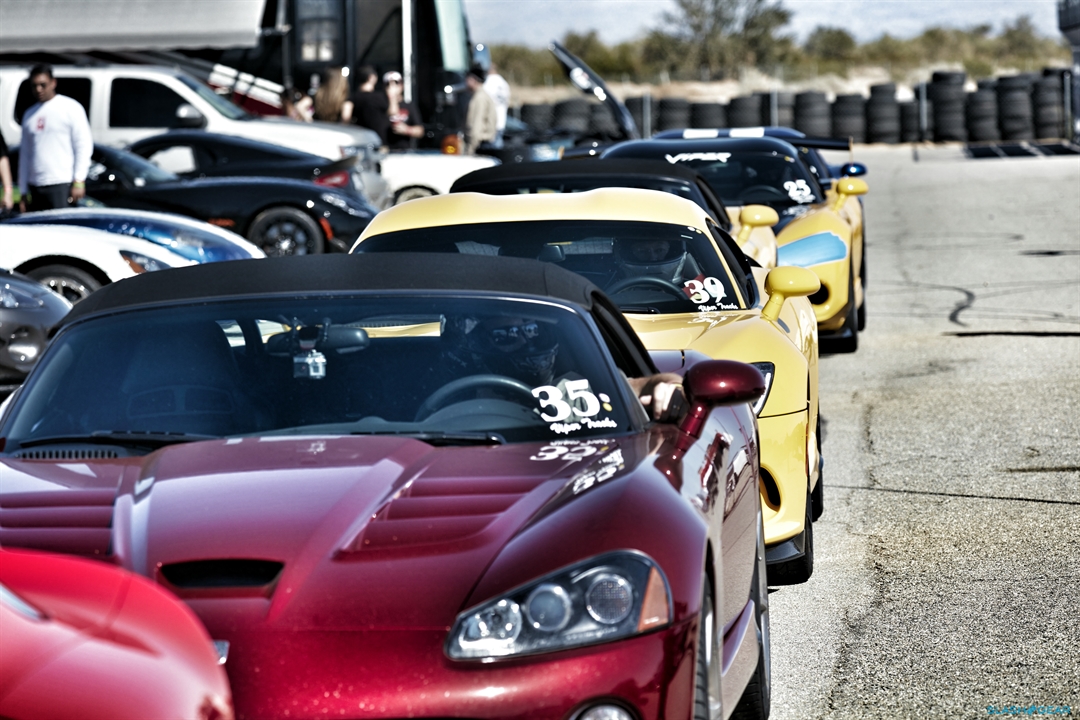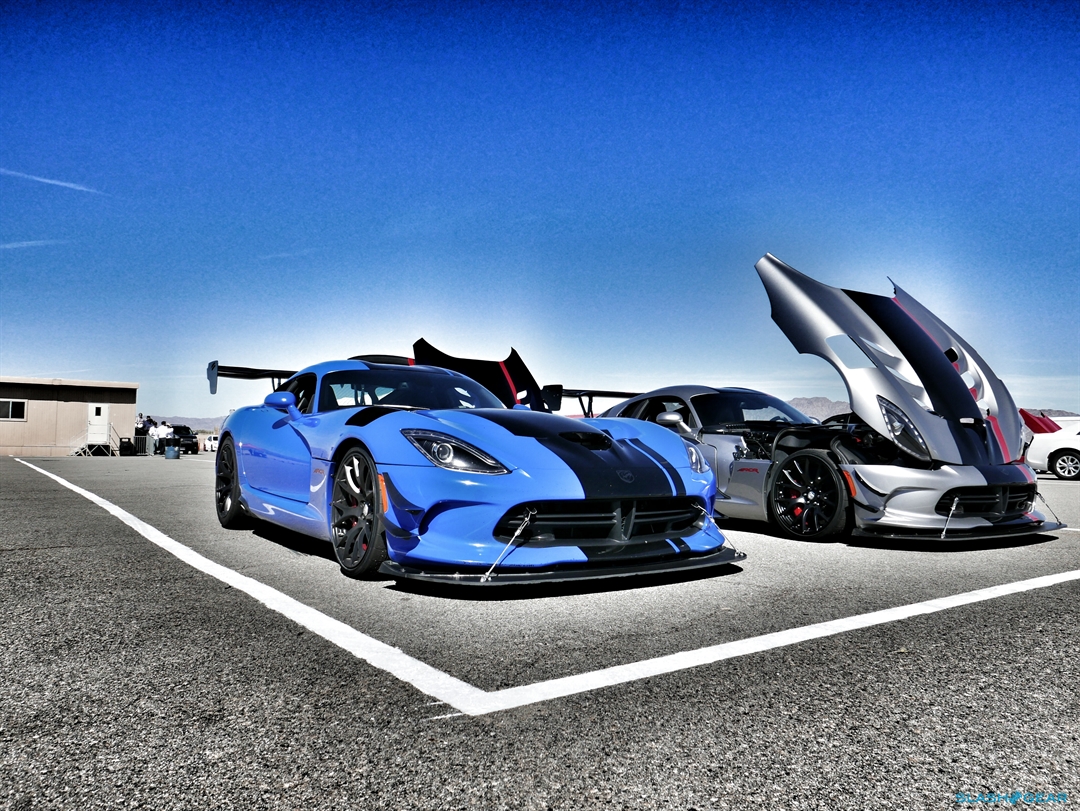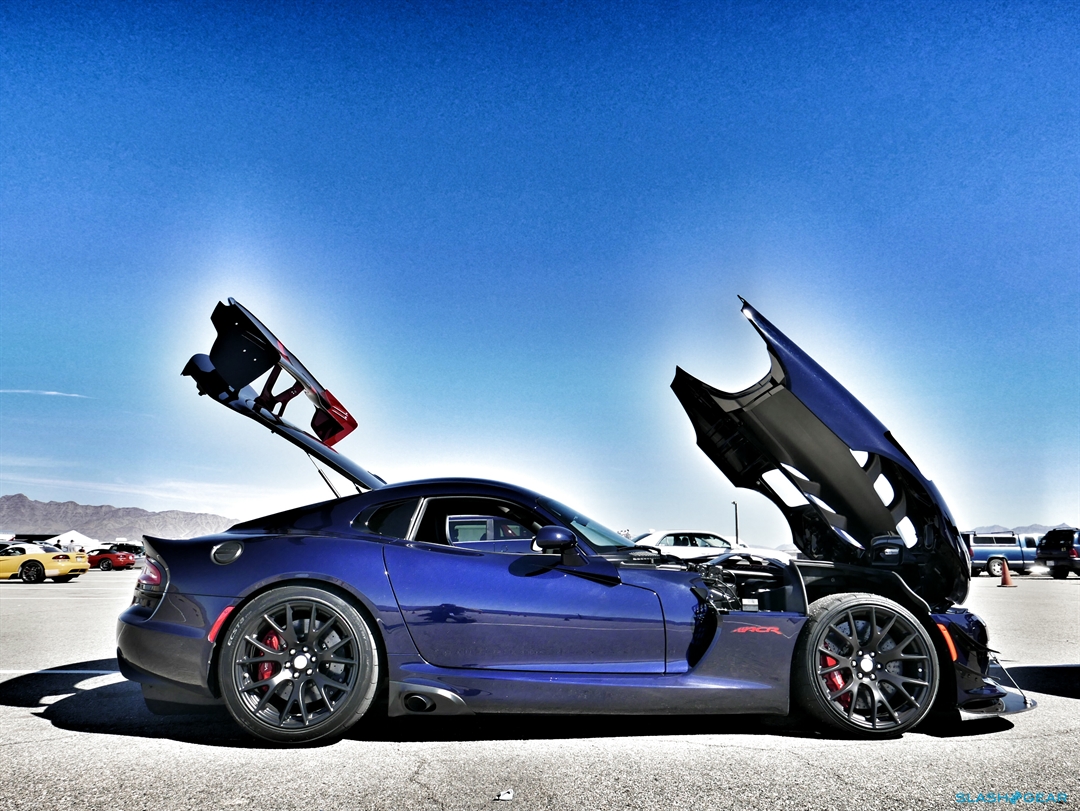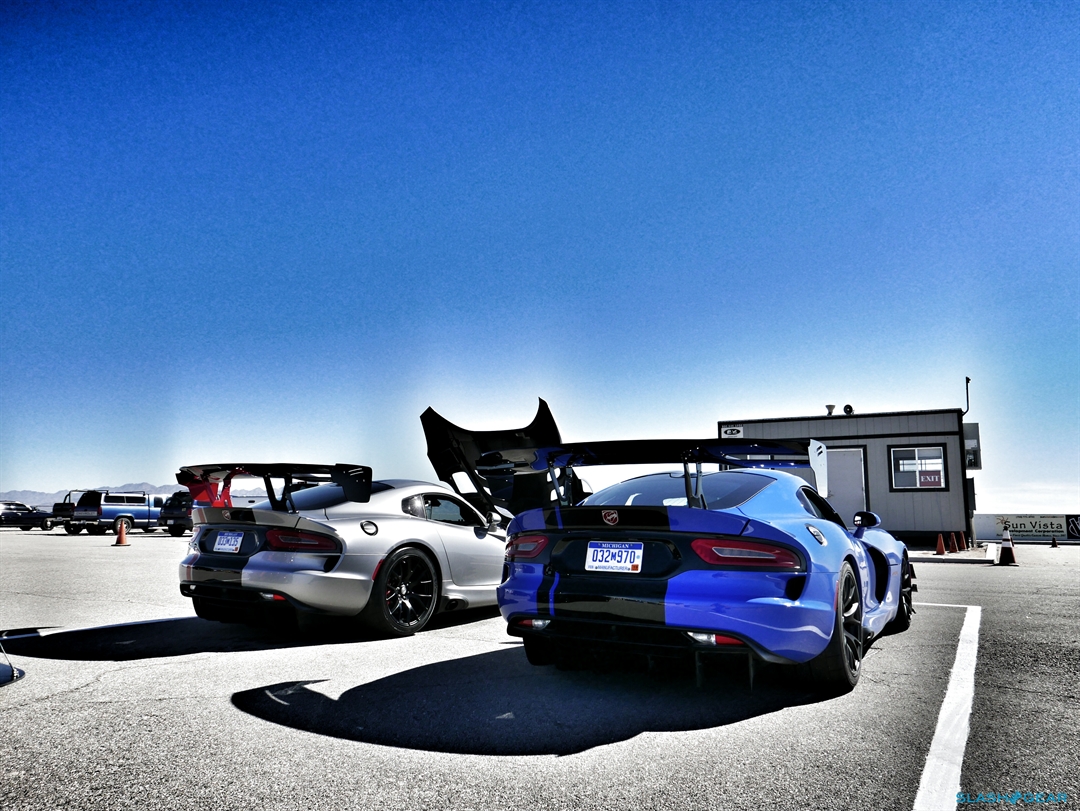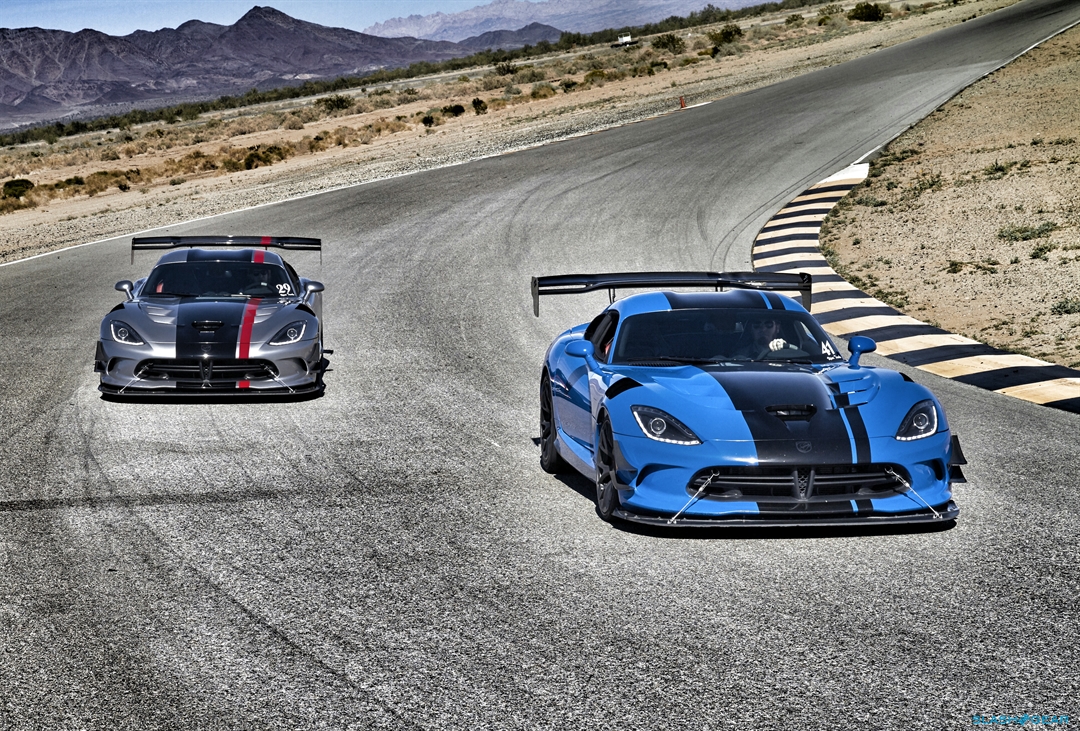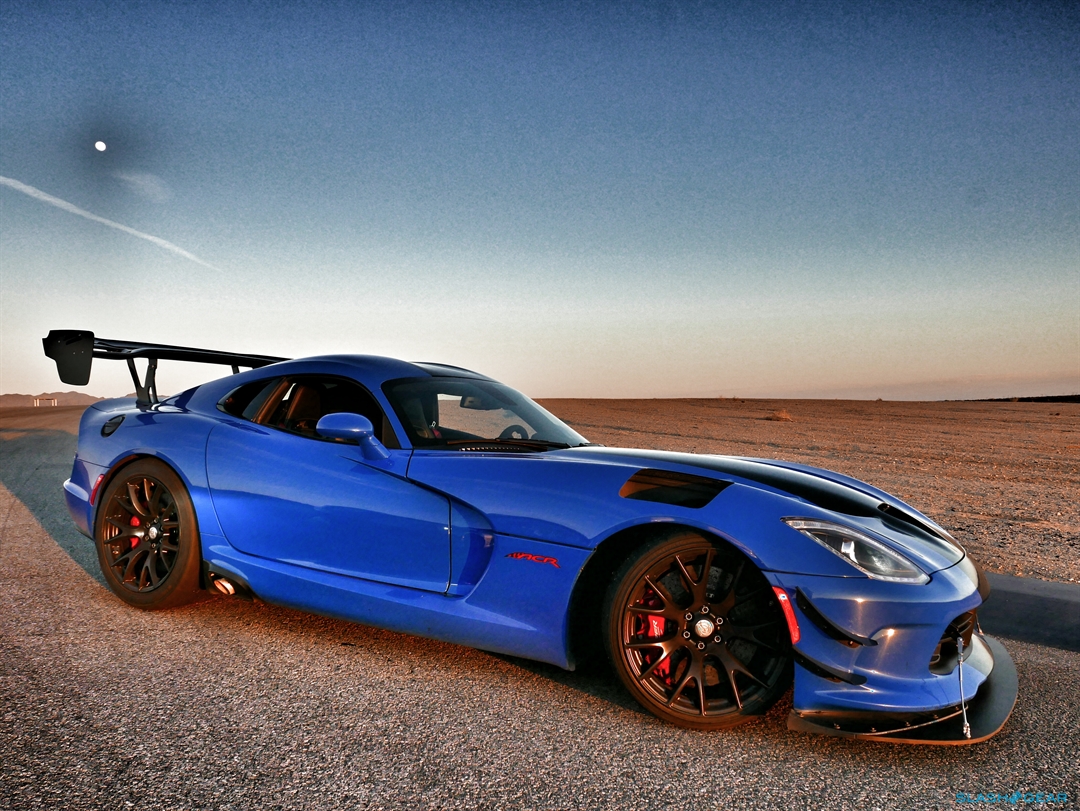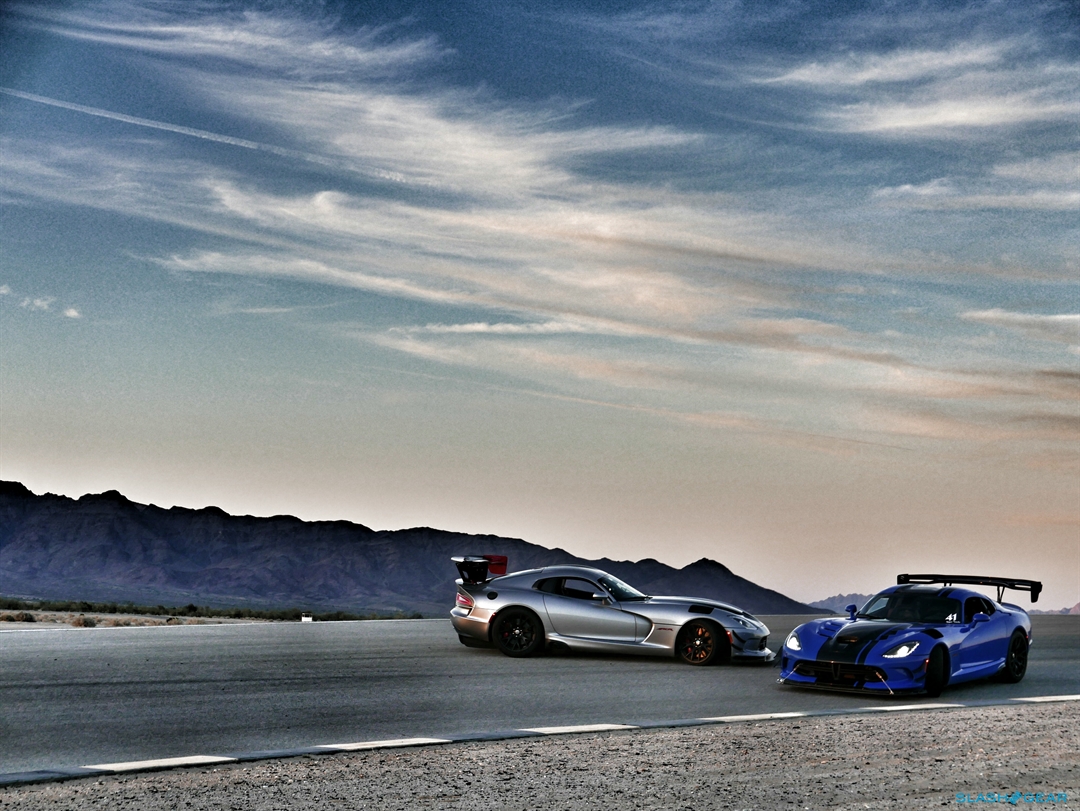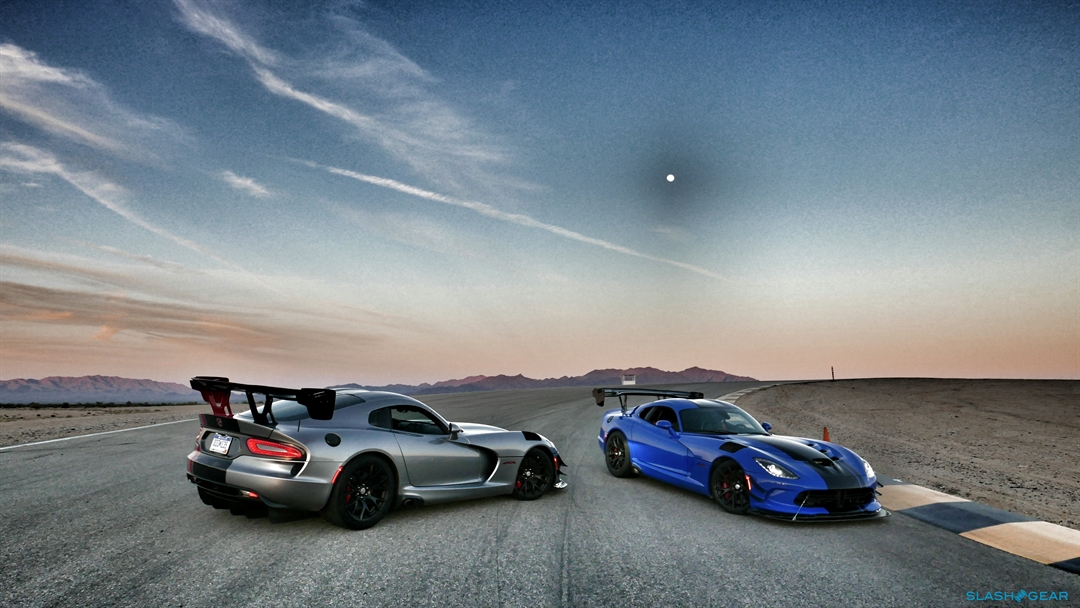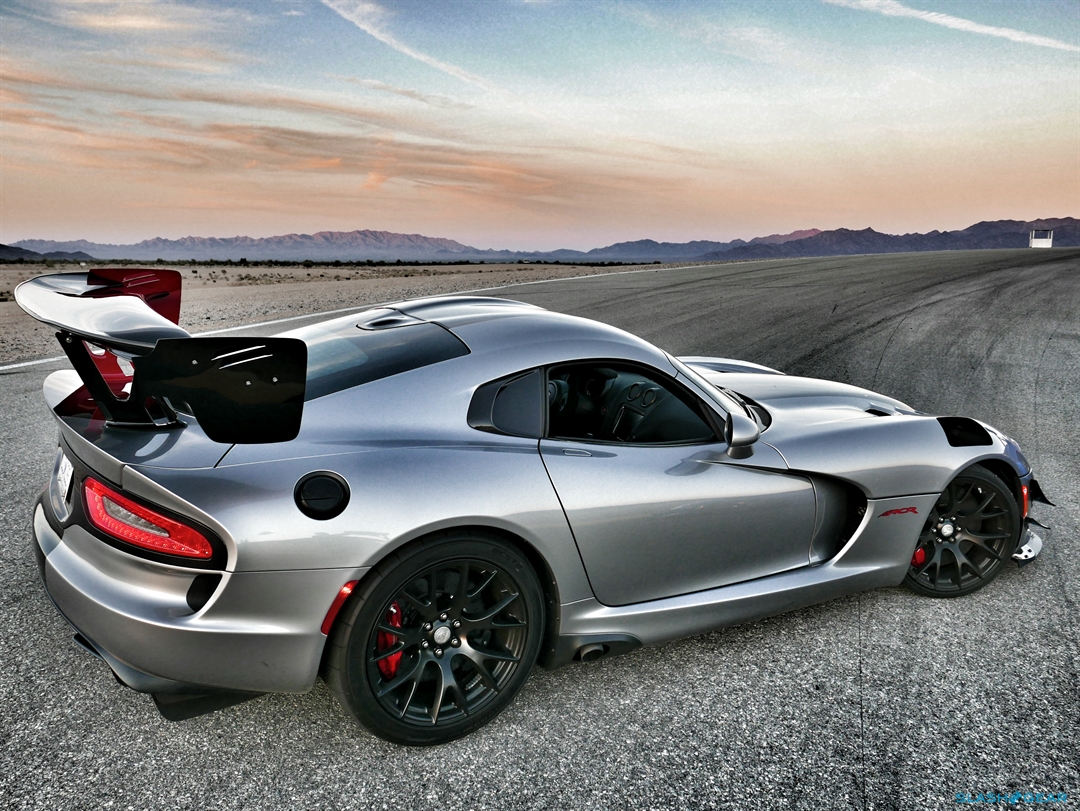2016 Dodge Viper ACR Review: Snakes On A Track
I grew up in the frozen north, which means whenever I find myself thrust into a desert environment I keep an eye out for snakes. You see, I've got all the wrong instincts when it comes to keeping my feet and hands out of the nooks and crannies where rattlers and their ilk love to hang out, and so I maintain a state of hyper-vigilance every time I set foot on the sand.
It was with these thoughts in mind that I surveyed Joshua Tree National Park from the safety of the cockpit of a Dodge Challenger SRT Hellcat, the heat of the day returning to the sky from whence it came as the sun began to set behind the nearby mountains. I was on my way to Chuckwalla Valley Raceway, which for the next two days would be transformed into the loudest, most raucous gathering of snakes in the state. Dozens of Dodge and SRT Viper owners were descending on the area, fangs out, for Viper Tracks II, a high performance driving event they had organized to exercise their cars in their natural environment.
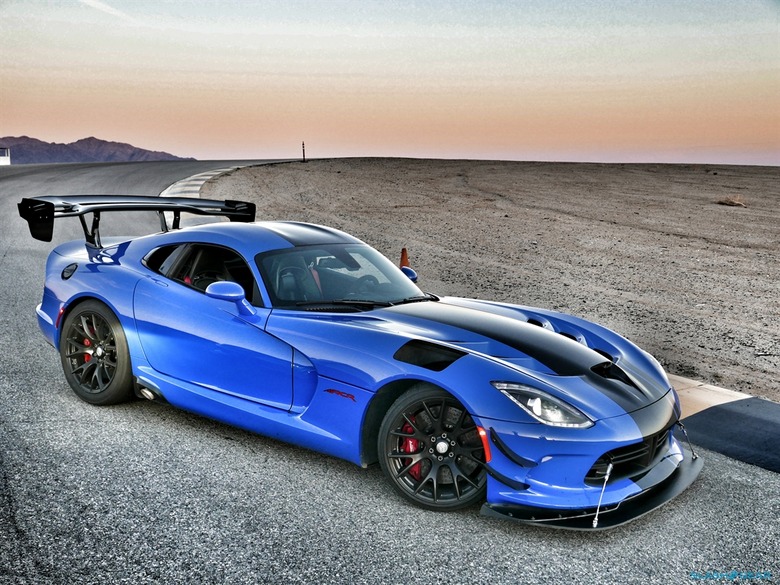
The concentration of thousands of horsepower in a single location is always cause for celebration, but I had an extra reason to be excited about Viper Tracks II. It would be the first time for me participating in such a high octane snake-fest – and I'd be doing it from behind the wheel of a 2016 Dodge Viper ACR.
The Viper has enjoyed a very specific reputation since it first hit the scene in 1992, and the ACR or American Club Racer is the barely-legal model that that feeds the flames of the coupe's bad-boy image. Although the Viper was designed from the get-go to mirror the wanton abandon of the original Shelby Cobra, but in a (slightly) more modern form, the brand has produced several ACR versions of its muscular monster intended almost exclusively for track use, of which the 2016 edition is the latest and greatest iteration.
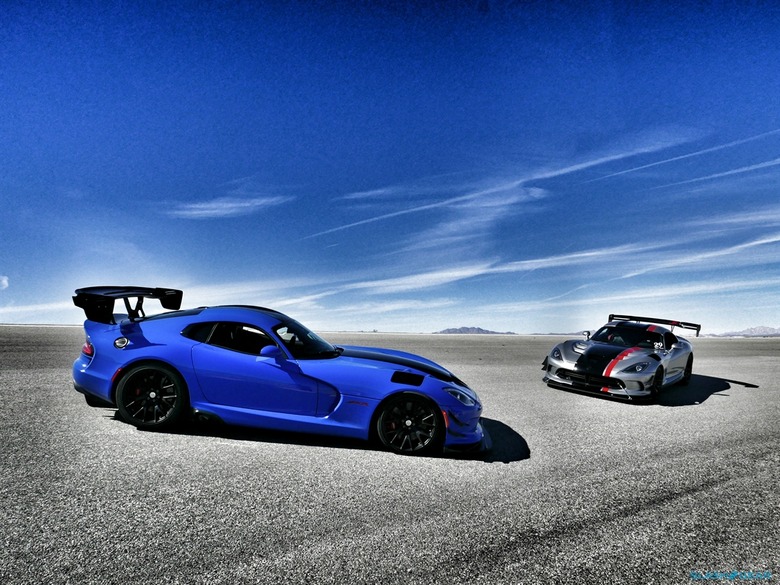
And don't kid yourself – what we're really talking about here is a thinly disguised racecar that's been plated and parked in showrooms almost as a dare to those for whom naked sky-diving and running with the bulls are too tame of a hobby. Although mechanically identical to its base Viper cousin (featuring an 8.4-liter V10 pushing out 645 horsepower and 600 lb-ft of torque to the rear wheels via a six-speed Tremec TR6060 manual transmission), a radical re-think of how the car slices through the air around it has dramatically changed its on-track behavior.
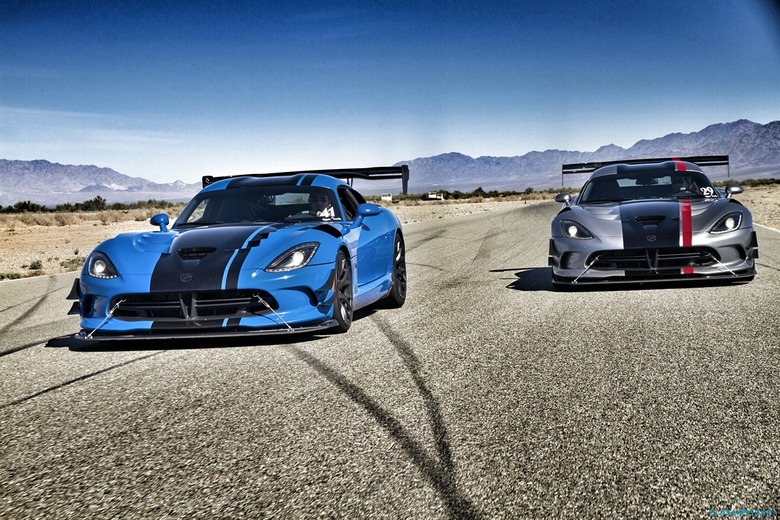
Nothing about the Dodge Viper's ACR upgrades are subtle, especially when equipped with the aptly-named 'Extreme Aero Package.' To begin with, consider the enormous rear spoiler, shaped like an X-Wing fighter's S-foils, that towers over the deck of the car and whose support struts fill the rearview mirror like some kind of aft torpedo targeting system. Then there's the dive planes jutting out from the leading edge of the front fenders like the vestigial tusks of a wild boar, the full chin spoiler, the removable wheel well caps and hood segments, and the under-bumper diffuser, each of which sends a distinct signal that will be familiar to any automotive libertarian or snake enthusiast: don't tread on me.
There are plenty of track rats out there that can be ordered with factory-installed windjammers, to be sure, but virtually none of them offer the level of do-it-yourself dynamic sculpting found on the Dodge Viper ACR. Everything from the diving board out back to the diffuser just below to the splitter up front can be configured, repositioned, or completely removed in order to change how the vehicle interacts with the environment at triple-digit speeds. Can you say the same about the Ford Mustang Shelby GT350R? Nope. How about the Porsche 911 GT3? Definitely not.
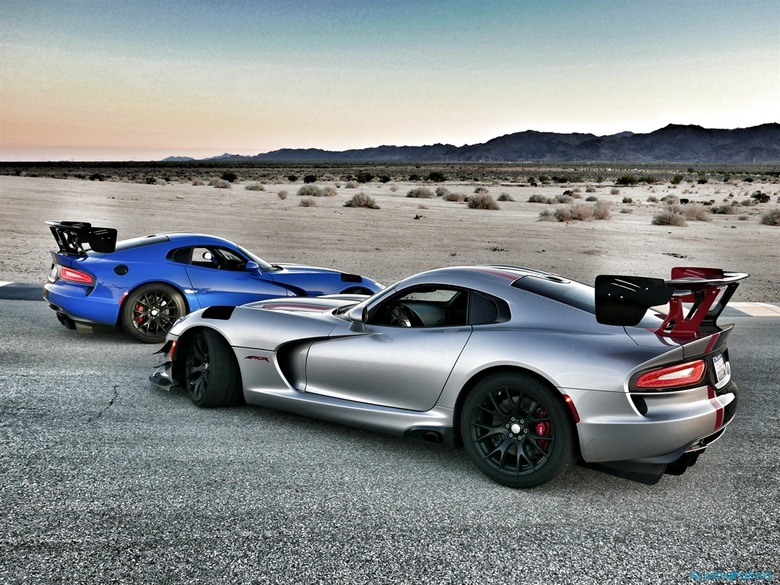
The Viper ACR's aero entourage is in fact so effective that it reduces the coupe's top speed from just above 200-mph to a not-quite-humble 177-mph, courtesy of the additional drag it creates. Of course, the trade-off is close to 2,000 lbs of downforce when flirting with terminal velocity, a figure that from the driver's seat translates into the hand of some pagan god mashing each of the car's massive 19-inch tires (295/25 up front and 355/30 rear) seemingly straight through the tarmac.
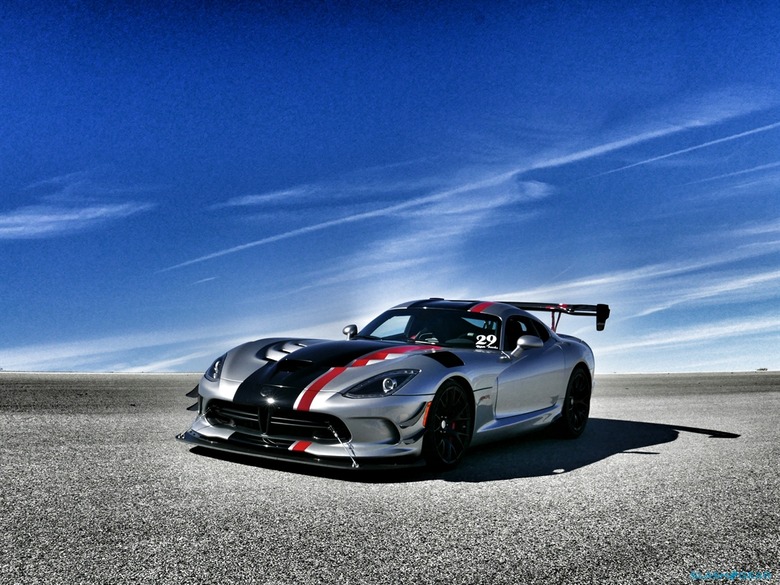
Having driven the GTS edition of the current Viper on a track before – although only sparingly – I prepared myself for a brutal rendition of speed from a car known for capricious behavior when helmed by intermediate pilots like myself. What I got from the ACR was nothing of the sort. From the very first lap, it became abundantly clear to me that this vehicle's limits of adhesion were so far off on the horizon that I'd probably have to use binoculars to pinpoint their exact location. As it were, I had no special optics to spot the edges of the Viper's performance envelope, and instead had to use my unassisted senses, particularly the g-meter located in my butt.
It certainly helped that communication from the car was excellent, a tribute to the setup dialed in to the vehicle's 10-way adjustable Bilstein coilover shocks by SRT engineers Erich Heuschele and Chris Winkler, who accompanied SRT Brand Manager Chad Seymour to the track alongside three of the ACRs they had devoted years of their lives to making a reality. Winkler in particular knows the ACR like inside of his own eyelids and now owns 11 of the 13 track records now held by the Dodge across America (with Laguna Seca number in the hands of Randy Pobs and Motorsport Ranch belonging to Tommy Kendall, both worthy third parties).
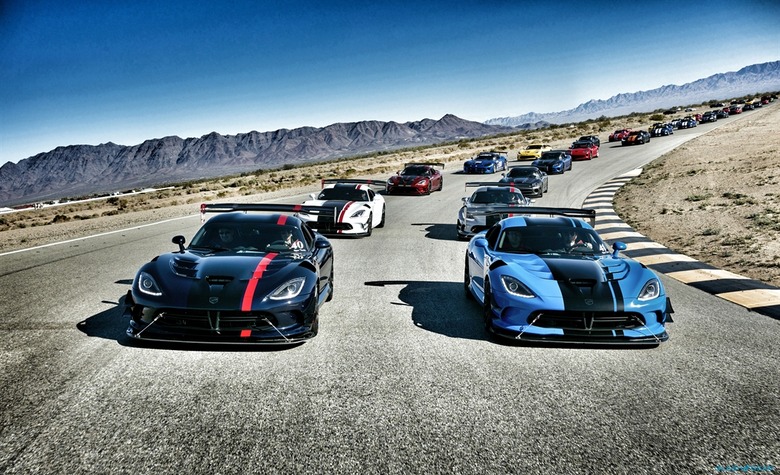
In truth, if there was one overwhelming characteristic that came through after spending two full days strapped into the 2016 Dodge Viper ACR at Chuckwalla, it was the coupe's unbelievable marriage of mechanical grip and aero stickiness. It's rare for me to feel so comfortable in such a powerful car in a short space of time, but there I was by the end of the weekend daring to pour the throttle on that much earlier on corner exit, carrying more speed into Chuckwalla's banked half-bowl than had seemed prudent the day before, and braking later – or sometimes not at all – at the entrance to the track's chicanes.
The faster I went, the more tenaciously the Viper clung to the asphalt below, a metallic shriek emerging from its side pipes as I held the car at redline and basked in the glory of its downforce before calling into action its undeniably effective but occasionally feedback-free carbon ceramic rotors. I should not have been that quick at a track I'd never driven before, and yet the confidence inspired by the ACR's impeccable manners and riotous soundtrack had me transcending the limits of unfamiliarity and putting my trust in a vehicle that not once betrayed that investment.
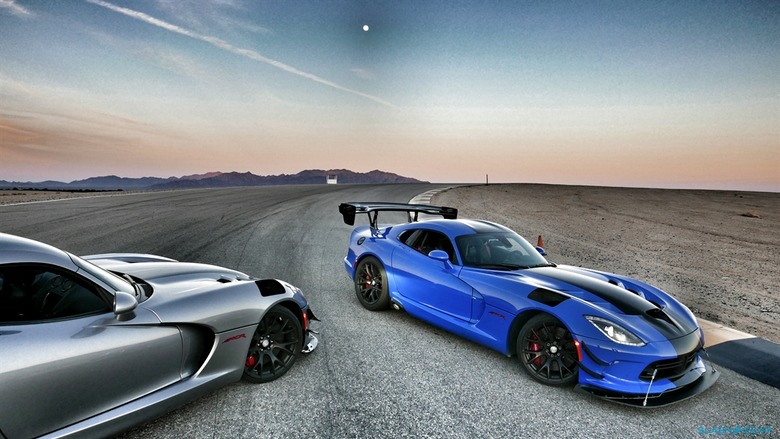
All throughout the weekend in the desert, the trio of ACRs parked near the starting grid found themselves the focal point of attention from Viper owners who had come to worship at the alter of a very specific type of speed. When judged by their specs – and lap times – there is a very clear pecking order in the Viper family tree, but this same sense of hierarchy is entirely absent amongst the individuals who had come together to make Viper Tracks II possible.
To love something so much that you would risk the object of that affection on a race track in order to develop an even deeper bond was a common thread amongst each and every individual at the event. This was made more poignant by the fact that not only is the Viper community one of the smallest in the sports car world, but given the marque's uncertain future, it's also the most endangered. Rather than draw in on itself, this group of fanatics, whether professional racer or weekend amateur, instead chooses to reach out and get as many people involved in their passion as possible.

The future of the Dodge Viper ACR looks bleak – Chrysler won't commit to producing any version of the Viper at all past the 2017 model year – yet its present is unabashedly awesome. With 13 chips on its shoulder and a full lock on the 'racecar for the street' formula, the ACR and the community that brought it to life proved to me that even someone with all the wrong reptile instincts can wrangle the biggest, meanest snake of all, and emerge unbitten.

